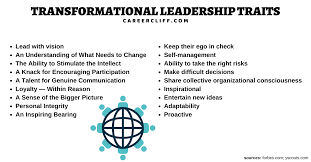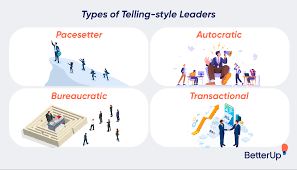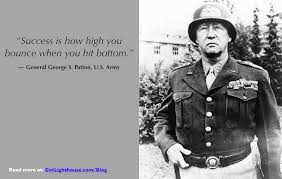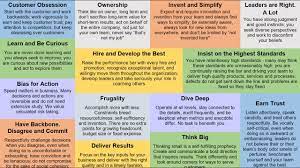7 Tips on How to Build a Transactional Leadership Culture
There are many different types of leadership styles, and each has its own advantages and disadvantages. Transactional leadership is one style that can be particularly effective in certain situations. If you’re looking to build a transactional leadership culture, here are seven tips to help you get started:
1. Define the goals and objectives of the organization.
2. Establish clear lines of authority and responsibility.
3. Encourage two-way communication between leaders and followers.
4. Promote a sense of teamwork and cooperation.
5. Reward good performance and punish bad behavior.
6. Provide feedback regularly to help individuals improve their performance.
7. Be open to suggestions for improvements from both leaders and followers alike.
transactional leadership definition
A transactional leader is someone who motivates employees by offering rewards in exchange for performance. This type of leader is focused on results and often uses a carrot-and-stick approach to motivate employees.
Transactional leadership can be an effective way to get employees to achieve short-term goals. However, it can also create a transactional culture where employees are motivated solely by rewards and incentives. This can lead to a lack of creativity and innovation as employees become more focused on meeting targets than on developing new ideas.
If you want to create a transactional leadership culture, here are some tips:
1. Set clear goals and expectations. Employees need to know what they’re working towards in order to be motivated.
2. Offer rewards that are meaningful to employees. Make sure the rewards you offer are something that your employees will actually value.
3. Be consistent in your application of rewards. If you only offer rewards occasionally, employees will quickly lose motivation.
4. Communicate frequently with employees about their progress towards meeting goals. This will help keep them on track and motivated.
5. Provide feedback that is both positive and constructive. Employees need to know what they’re doing well and where they can improve.
6. Be open to input from employees about how goals could be met more effectively. Their input can help you refine your approach and make it more effective.
7. Encourage employee development

Define what transactional leadership is and how it differs from transformational leadership.
Transactional leadership is a type of leadership in which the leader provides guidance and direction to followers in exchange for their obedience and compliance. This type of leadership is typically more concerned with maintaining order and stability, and achieving short-term goals, than with long-term vision or transformational change. Transformational leadership, on the other hand, is a type of leadership that inspires people to change their behavior and beliefs in order to achieve a greater good. Transformational leaders are often more concerned with long-term vision and transformation than immediate results.
Explain the benefits of creating a transactional leadership culture within an organization.
A transactional leadership culture can bring numerous benefits to an organization. For one, it can help create a more cohesive and efficient work environment, as everyone understands and is held accountable for their specific roles and responsibilities. Additionally, a transactional leadership culture can also promote creativity and innovation, as employees are encouraged to think outside the box and come up with new ideas. Lastly, a transactional leadership culture can instill a sense of ownership and pride in employees, as they feel that their contributions are valued and appreciated. Ultimately, these benefits can lead to a more productive, positive, and successful organization.
Share tips on how leaders can build a transactional leadership culture within their team or company.
Leaders play a key role in shaping the culture of their team or company. One way they can do this is by creating a transactional leadership culture. Transactional leaders are those who emphasize task completion and operational efficiency. They create an environment in which employees are motivated to achieve results by offering rewards for meeting objectives.
There are a few things leaders can do to build a transactional leadership culture within their team or company:
1. Define clear expectations and objectives. Employees need to know what is expected of them in order to be successful. Leaders should communicate goals clearly and ensure that everyone is on the same page.
2. Set up a system of rewards and incentives. Offering employees rewards for meeting objectives will help motivate them to achieve results. Incentives can include both tangible items (e.g., bonus pay) and intangible ones (e.g., recognition).
3. Create accountability mechanisms. It’s important that employees are held accountable for their performance so that they take responsibility for achieving results. Leaders can establish systems such as regular check-ins or progress reports to help track employee performance against objectives
Encourage readers to consider adopting a transactional leadership approach in their own organizations.
Leadership styles are constantly evolving to meet the needs of the current business climate. One leadership style that has gained popularity in recent years is transactional leadership. This approach emphasizes setting clear expectations and providing employees with the resources they need to achieve success. When employees meet or exceed those expectations, they are rewarded. This type of leader provides clear direction and motivates employees by linking their individual goals to the organization’s objectives.
Adopting a transactional leadership style can help organizations achieve their goals while also empowering employees to take ownership of their work. This approach can create a more positive work environment and improve employee satisfaction. If you’re interested in learning more about transactional leadership, there are many resources available online and in print.
Discuss the role of rewards and recognition in motivating employees.
While financial compensation is always a key factor in employee motivation, rewards and recognition can also play an important role. Acknowledge employees for a job well done with sincere praise and gratitude, and consider offering non-monetary rewards such as flexible work hours, extra vacation days, or tickets to sporting events or concerts. When used effectively, rewards and recognition can help create a positive work environment where employees feel appreciated and motivated to do their best.
Emphasize the need for ongoing communication and support from management.
It is essential that management provides ongoing communication and support to employees in order to maintain a productive and positive work environment. Employees need to feel like they are supported in their roles and that their efforts are valued. When employees feel appreciated, they are more likely to be engaged and committed to their work. Furthermore, regular communication from management will help keep employees informed about company updates, changes, and goals. This type of transparency can build trust between management and employees, which is crucial for maintaining a healthy workplace culture.
Encourage transparency and openness to feedback to create a culture of continuous improvement.
When it comes to creating a culture of continuous improvement, one of the most important things you can do is encourage transparency and openness to feedback. By creating an environment where everyone feels comfortable sharing their thoughts and ideas, you can foster a collective commitment to constantly improving both individually and as a team. Additionally, openly discussing areas that need improvement can help prevent small problems from snowballing into larger ones. Ultimately, by promoting transparency and encouraging feedback, you can create a work culture that is truly dedicated to continuously getting better.
transactional leadership examples
There are many transactional leadership examples that you can use to build a transactional leadership culture in your organization.
One example is to create clear expectations for employees and hold them accountable to meeting those expectations. This could involve setting specific performance goals and then providing feedback on progress towards those goals.
Another example is to provide employees with clear instructions on tasks and then monitoring their progress to ensure that they are completing the tasks as expected. This could involve regular check-ins and communications about the task at hand.
Finally, it is important to reward employees when they meet or exceed expectations. This could involve financial incentives, recognition from leaders, or other types of rewards. By doing this, you will show employees that their hard work is appreciated and that it pays off to meet or exceed expectations.
transactional leadership style
Transactional leadership is all about creating a system of give and take. In order to build a transactional leadership culture, you need to establish clear expectations and then provide rewards or punishments based on performance. Here are seven tips on how to build a transactional leadership culture:
1. Define expectations clearly. Transactional leaders need to be clear about what they expect from their team members. Make sure everyone is on the same page in terms of what needs to be accomplished.
2. Set goals and deadlines. Once expectations are defined, it’s important to set specific goals and deadlines. This will help keep everyone focused and on track.
3. Be consistent with rewards and punishments. In order for a transactional leadership style to be effective, there must be consistency with rewards and punishments. If someone consistently meets or exceeds expectations, they should be rewarded accordingly. Similarly, if someone consistently falls short, they should be punished in a way that is commensurate with their performance.
4. Offer feedback regularly. Feedback is essential for any leader, but it’s especially important for transactional leaders. Make sure you’re offering feedback on a regular basis so team members know how they’re doing and where they need to improve.
5. Be available to answer questions. Whenever possible, try to be available to answer questions from your team members. This will show them that you’re invested in their success and willing to help them achieve their goals.
transformational vs transactional leadership
When it comes to leadership styles, there are two main types: transformational and transactional. Transformational leadership is a more visionary and inspiring style, while transactional leadership is more focused on carrying out tasks and maintaining order.
So, which type of leadership is better for building a successful company culture?
Here are 7 tips on how to build a transactional leadership culture:
1. Clarify expectations and roles
In a transactional leadership culture, it’s important to clarify expectations and roles from the outset. This way, everyone knows what their responsibilities are and what is expected of them.
2. Focus on results
A transactional leadership culture places a strong emphasis on results. This means that leaders need to be clear about what they expect from their team members and hold them accountable for meeting those expectations.
3. Encourage communication
Transactional leaders need to encourage open communication within the team. This way, team members feel comfortable sharing their ideas and concerns, and leaders can provide feedback and direction more effectively.
4. Promote teamwork
In a transactional leadership culture, teamwork is key. Leaders should promote collaboration within the team and reward those who work well together towards common goals.
5. Recognize individual contributions
While teamwork is important in a transactional leadership culture, it’s also essential to recognize the individual contributions of team members. This helps to motivate individuals to continue doing their best work and






